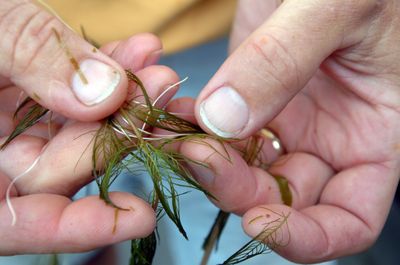Boaters held responsible
New law levies fines on boaters who don’t enlist in battle against aquatic weeds

A new regulation puts the pressure on Washington boaters to go over their boats, motors and trailers with a fine-tooth comb every time they leave the water at any access (public or private).
Remnants of any aquatic plants are found later (while the boating equipment is on the road) during inspections by law enforcement authorities could lead to a fine of up to $378 for the owner or operator.
Fish and Wildlife Department officers began enforcing the state statute that bans the transportation of all aquatic plants last month.
The law makes no distinct between knowingly and unintentionally carrying aquatic plants and puts the responsibility for clearing their gear on equipment owners or operators.
While the law also makes no distinction between native and non-native aquatic species, it is squarely aimed at slowing the spread of the so-called exotic or invasive water plants that have come to plague many ponds, lakes and rivers nationwide including dozens in Washington.
“If boaters don’t remove all plants before they leave the ramp, they can easily spread into other bodies of water when the boat is launched again or if they are dislodged when traveling,” said Bruce Bjork, chief of the state fish and wildlife department’s enforcement program.
“Noxious weeds such as milfoil are typically spread to lakes on boat trailers and fishing gear,” said Bjork. “Controlling the extensive spread of milfoil alone has cost the state millions of dollars,” he said.
Milfoil and hydrilla, for example, can be spread even by dried fragments reintroduced to another waterway.
The results are clogged lakes, choked-off creeks, displaced fish and wildlife, lost swimming areas and plugged water distribution systems.